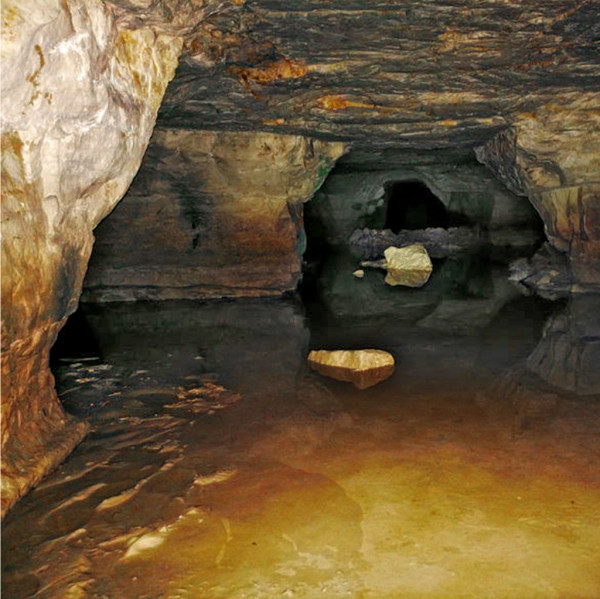Ground penetrating radar measurements are a geophysical and non-intrusive method for measuring the subsurface in order to reveal underground natural or artificial forms such as soil layers, various materials or even shapes and cavities. It uses electromagnetic radiation in the microwave range to detect and digitally visualize corresponding structures based on the reflective signals.
Demand and areas of application:
Ground penetrating radar techniques have been researched and developed since the 1970s, and were used in archaeology in particular at the beginning. The devices have developed enormously until today - especially lately against the background of global digitization. Nowadays, such devices are used in many different ways: On the one hand, there is the entire geophysics, where it is particularly important to analyze soil layers or to locate cavities for various construction projects, for example, to be able to place concrete piers in a targeted manner. In addition, ground penetrating radar measurements are also increasingly being carried out in other areas - for example, to identify and measure underground structures such as bunkers or tunnels. Of course, it is important to always observe the respective local legal situation, as measurements may not always be taken everywhere.
Technical background:
The principle is that radar energy is radiated downward directly into the ground and takes advantage of the different electrical conductivities of the various soil layers or materials and cavities to reflect their different levels of conductivity back to the receiver, which can make them digitally visible accordingly. Depending on manufacturers and models, penetration depths of between one to three digits meter can be achieved here.
Ground penetrating radars are categorized into two classes, which, depending on the choice, offer a compromise between maximum penetration depth and the resolution capability, namely:
- Pulse radar: These devices emit an extremely short signal that lasts only a few nanoseconds. The propagation time between the transmission of this signal and its reception is the time it takes to receive the echo, which is used to measure distance. The receivers of these radars have a very high sampling rate.
- Continuous wave radar (or FMCW radar = Frequency Modulated Continuous Wave Radar): FMCW radars use inverted fast Fourier transforms. The main difference here is that the transmitter operates continuously for the duration of the radar measurement.
The technical design of a ground penetrating radar is in many cases as follows:
- Control unit: Core component of a ground penetrating radar with control unit, software, screen and further interfaces to antennas, power supply and more. Often, depending on the manufacturer and model, the software or firmware of a ground penetrating radar can be updated over time using a web connection.
- Antenna: Very often, transmit and receive antennas are combined into one. The size of an antenna depends on its average frequency: the larger the frequency, the smaller the dipoles and the antenna, and the greater the radiated energy. The electromagnetic signals used range from 1 MHz to 2.6 GHz. In this case, a compromise usually has to be made between depth of penetration into the ground versus the level of detail: the deeper you can look into the ground, the lower the level of detail will then be - and vice versa.
- Electrical supply: Ground penetrating radar usually requires a stronger battery so that enough power can be applied during radar measurements to shoot the electromagnetic beams into the ground for a short time and measure them. Therefore, batteries in the "lawnmower class" with a correspondingly strong amperage are usually used.
- Mounting: In order to be as mobile as possible; especially to be able to measure larger areas, ground radars are usually built and offered on the market in mobile versions; e.g., with mobile bases whose material composition, however, must not interfere with radar measurements.
- Other features: Depending on the model, a ground penetrating radar may have other features, such as the presence of a displacement sensor, GPS module, or other technical refinements.
Result assessment:
As a rule, the scanned areas are interpolated into 2D result maps, which already offer good conclusions about soil compositions, cavities and structures. The extra mile can be gone additionally, if the measurements can be processed finally also in 3D models. Nowadays, this is also possible with the appropriate software. In addition, the processed 2D and 3D materials should be combined with additional existing map material.

Underground scan by OYSTEC and discovery of a buried object at a depth of 3 meters
Research and Application at OYSTEC:
OYSTEC owns several ground penetrating radar instruments of the FMCW type and is continuously researching software and hardware improvements as well as their practical applications in various industrial fields. We have already taken depth images up to 50 meters, which we have displayed and evaluated in 2D and 3D. Please contact us if you are interested in a possible application of our ground penetrating radar capabilities in one of your projects.
Link: Direct Contact with OYSTEC through our contact form
Link: Additional information about our ground penetrating radar innovation activities
Copyright: All mentioned brands, brand names, website addresses and trademarks or logos, are the property of their respective owners.

